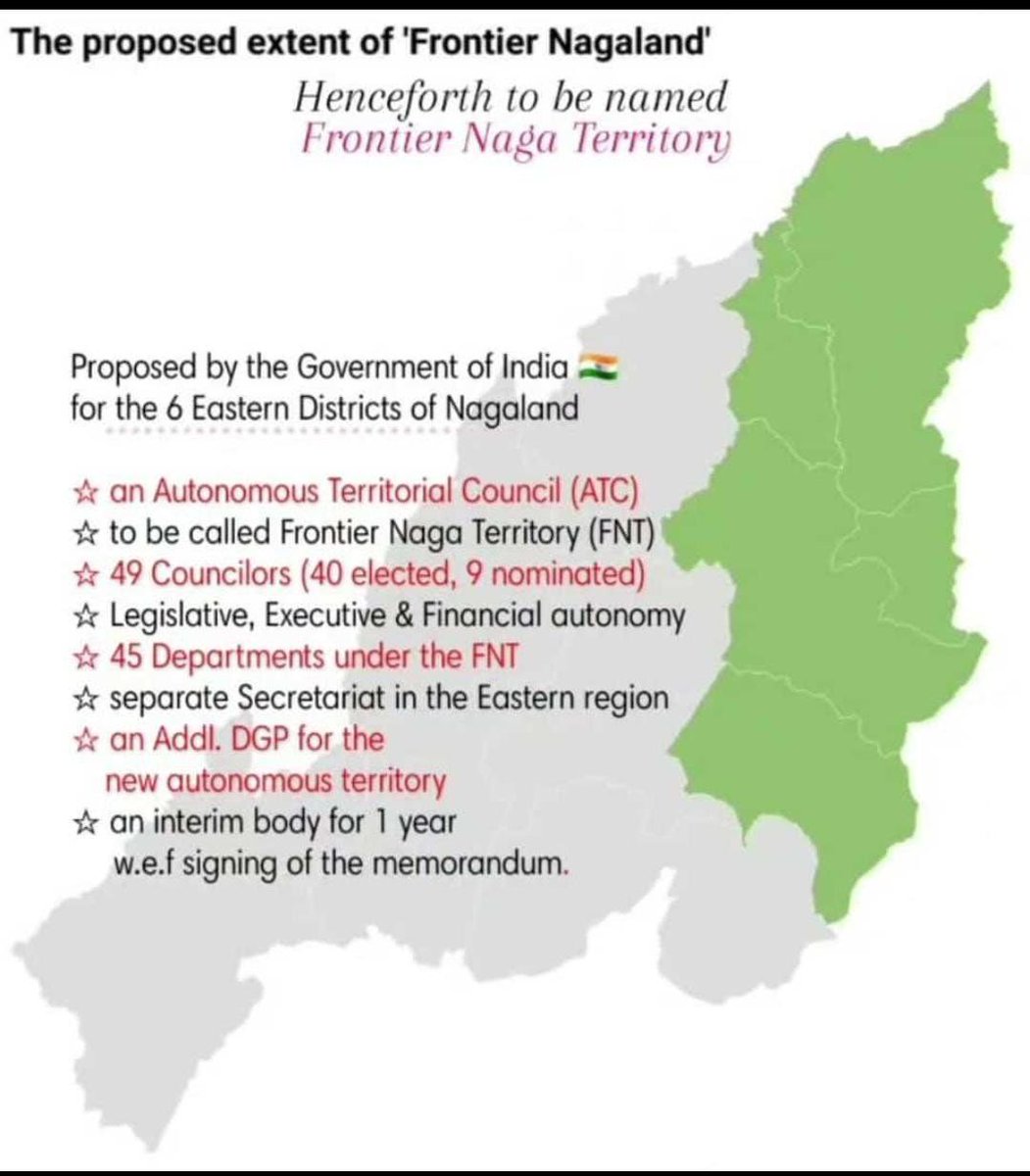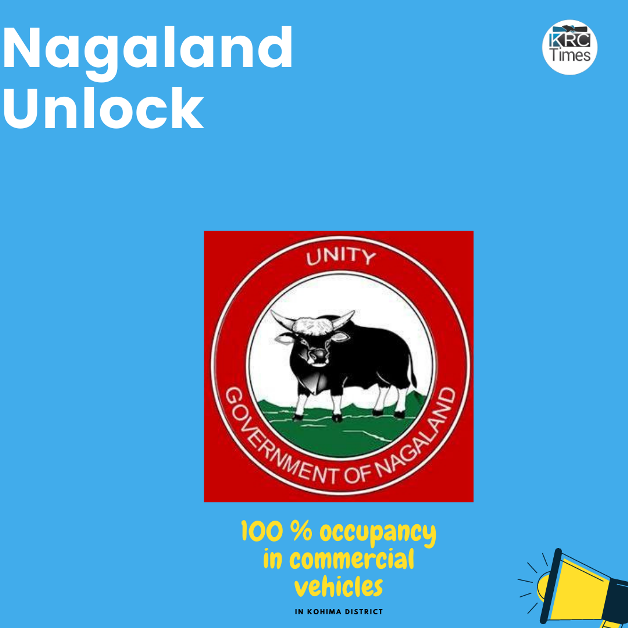In the intricate web of constitutional governance and the geopolitical challenges faced by India, particularly in the northeastern state of Nagaland, the idea of establishing a Frontier Naga Territory emerges as a potential solution to address longstanding concerns related to the international borderland communities in the Eastern part of Nagaland
 KRC TIMES NE Desk
KRC TIMES NE Desk

In the intricate web of constitutional governance and the geopolitical challenges faced by India, particularly in the northeastern state of Nagaland, the idea of establishing a Frontier Naga Territory emerges as a potential solution to address longstanding concerns related to the international borderland communities in the Eastern part of Nagaland. At the heart of this proposal lies a vision of transformation, one that not only addresses the concerns of the Government of India regarding the dynamics of international borders but also fosters a sense of unity, cooperation and justice among border communities of Eastern Nagaland. The Frontier Naga Territory needs to be envisioned as a natural border, constructed not with bricks and mortar but with the walls of familial attachment and cemented with the mutual love and respect that border communities share among their brethren across borders.

The proposed Frontier Naga Territory represents more than just a geographical delineation; it embodies a profound synthesis of socio-cultural heritage and economic revitalization, poised to redefine the landscape of the region. Rooted in the rich fabric of Eastern Naga people and their unique traditions and history, this innovative proposal offers more than just administrative boundaries; it presents a holistic solution to endemic challenges plaguing the area. By leveraging the inherent familial ties that transcend political borders, the proposed territory establishes a natural bulwark against the proliferation of illicit activities and the movement of contraband. This pioneering approach not only honours the age-old customs of the Eastern Naga community but also heralds a new era of prosperity and stability, promising to sow the seeds of harmony amidst the historically tumultuous terrain. Through a strategic amalgamation of cultural preservation and progressive development, the Frontier Naga Territory emerges as a beacon of hope, offering a paradigm shift towards sustainable peace, socio-political-economic justice and prosperity in the region.
By formalizing the Frontier Naga Territory, the government would not only acknowledge but also honour the deep-rooted bonds that have endured over time between the Naga communities spanning both India and Myanmar. This formal recognition would serve as a significant step towards providing a structured platform for fostering greater interaction and collaboration among the border communities of the two nations. Through the establishment of formalized structures, well-defined avenues for trade partnerships, cultural exchanges, and people-to-people initiatives would flourish, enriching the social and economic fabric of the region. Such engagements hold the potential to not only uplift the lives of those residing in the border areas but also play a pivotal role in fostering regional peace and prosperity. By facilitating dialogue and cooperation across borders, the formalization of the Frontier Naga Territory could serve as a beacon of hope for constitutional justice for the deprived Eastern Naga communities through sustainable development and harmonious relations in the region.
Central to the concept of Frontier Naga Territory is the empowerment of local communities to actively participate in the governance and development of their own region. Historically marginalized and neglected, border communities of the Eastern Nagaland People’s Organisation (ENPO) region in Nagaland have often borne the brunt of conflict and underdevelopment, perpetuating cycles of grave poverty and disenfranchisement. By granting them greater space in constitutional governance and decision-making authority, the central government will not only acknowledge their historical grievances but also provide a platform for them to redress past injustices and shape their own destinies. This empowerment fosters a sense of ownership and agency among the local populace, catalyzing initiatives for inclusive growth that are rooted in the unique needs and aspirations of the communities themselves. Through collaboration and partnership between the government and these communities, the Frontier Naga Territory model stands poised to usher in a new era of development, equity, and sustainable progress in the region.
Empowering local communities involves more than just decentralizing administrative powers; it’s a multifaceted strategy aimed at nurturing self-reliance and resilience from the ground up. Beyond mere administrative delegation, it encompasses the deliberate allocation of resources for comprehensive infrastructure development, ranging from basic amenities to robust transportation networks, thereby bridging the gap between rural and urban areas. Furthermore, it champions grassroots democracy by facilitating the election of representatives who intimately understand the intricacies of local dynamics and can effectively advocate for their constituents’ interests at higher levels of governance. This bottom-up approach not only ensures that policies resonate with the distinct needs and aspirations of border communities of Eastern Nagaland, which may differ vastly from those of other areas as well as urban centers in Nagaland, but also cultivates a profound sense of ownership and pride in shaping their collective destiny. By empowering locals to actively participate in decision-making processes and equipping them with the necessary tools and resources, such as access to education and technology, communities are poised to chart their own course toward sustainable development and prosperity, thereby fostering a more inclusive and equitable society.
The establishment of Frontier Naga Territory represents more than just a geographical delineation; it embodies a profound commitment to fostering peace, reconciliation, and nation-building initiatives. In the tumultuous landscape of Eastern Nagaland, where conflict has woven a complex fabric of economic disparity, political disillusionment, and social unrest, the creation of this territory signifies a pivotal shift towards a future characterized by harmony and progress. For too long, the region has languished under the shadows of turmoil, obscuring its vibrant cultural tapestry and untapped potential. By embracing collaboration and mutual understanding, not only within its boundaries but also across borders, the government articulates a resounding message of optimism and renewal. This initiative not only seeks to address historical grievances but also seeks to catalyze a collective effort towards a brighter, more inclusive future, where the voices of all communities resonate in the symphony of nation-building.






